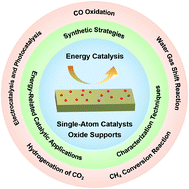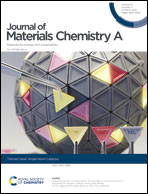Single atoms supported on metal oxides for energy catalysis
Abstract
Single-atom catalysts (SACs) have attracted wide interest from researchers, as they promisingly bridge the gap between homogeneous and heterogeneous catalysts. There are various types of supports reported to anchor single metal atoms. Among them, metal oxides have received much attention because of their specific and variable properties. In this review, the unique role of typical oxide supports in anchoring isolated metal atoms and participating in catalysis is emphasized. The interactions between metal atoms and oxide supports are clarified, so as to show how to stabilize the atomic metal sites and adjust the geometric and electronic structure of single atoms reasonably. Accordingly, we highlight and summarize the progress made in the synthesis of SACs in recent years, placing special emphasis on preventing isolated metal atoms from migrating or agglomerating. In addition, the modern characterization technologies of SACs are summarized and discussed, which can provide strong evidence on the geometrical structures and electronic states of SACs. Then the applications of SACs supported on metal oxides in energy catalytic reactions are reviewed, such as CO oxidation, the water–gas shift reaction, CH4 conversion, CO2 hydrogenation, oxygen reduction reaction, hydrogen evolution reaction, and CO2 reduction reaction. Finally, the existing problems and development prospects in this field are discussed.

- This article is part of the themed collection: Single-Atom Catalysis


 Please wait while we load your content...
Please wait while we load your content...